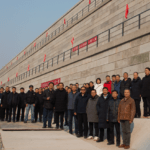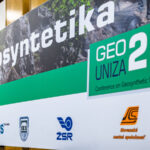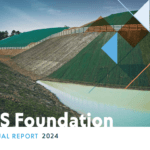 With a reach over two vast countries and an incredible track record of innovation in geosynthetics education, the North America chapter of the IGS has been busy and effective since it was formed in 1988. Today the chapter’s mission is to provide leadership in advancing geosynthetics education and research to attain their appropriate and widespread use as engineering materials. IGS-NA President John McCartney told us more…
With a reach over two vast countries and an incredible track record of innovation in geosynthetics education, the North America chapter of the IGS has been busy and effective since it was formed in 1988. Today the chapter’s mission is to provide leadership in advancing geosynthetics education and research to attain their appropriate and widespread use as engineering materials. IGS-NA President John McCartney told us more…
Can you tell us about your membership?
“We cover the USA and Canada and have 70 individual members and 21 student members. We do not have corporate members, but 23 of the IGS corporate members are from our chapter. The majority of our members are academics; all are true advocates for the benefits of geosynthetics technology. As a collective and individually, our members build geosynthetics awareness through education and research dissemination, and proactively work with groups such as The Transportation Research Board, ASCE GeoInstitute, ASTM International Committee D35 on Geosynthetics, ISO Technical Committee 221 on Geosynthetics and The Geosynthetic Materials Association (GMA).”
What other activities are you involved in?
“Education and research dissemination are our primary focus. In North America, geosynthetics are widely accepted in most areas of civil engineering, and research and development is well funded. But there is still an opportunity to raise awareness within specific applications – for example there is strong potential for growth in the transportation field. We support awareness and education by developing and hosting a variety of short courses and workshops. We’re particularly proud of our biannual Educate the Educators (EtE) series of events. We have also created a very successful series of webinars that are well attended by practitioners.”
Can you tell us a little more about Educate the Educators?
“Geosynthetics are still not widely covered in the undergraduate curriculum in US and Canadian universities. Educate the Educators gives university professors specialized, hands-on training and lecture materials so they can deliver geosynthetics content at their own schools. Our fundamental goal is to give interested professors the knowledge and materials they need to deliver at least one 50-minute lecture on geosynthetic functions, types, and applications. Our next EtE event is in San Diego in December this year. One thing I should add is that EtE is just one part of a holistic approach to awareness. We also need to engage practitioners who are specifying for projects, to make sure they are aware of the range and benefits of geosynthetics.”
What is your focus for the next few months?
“We are involved in many conferences and workshops, all of which are detailed on our website. GeoAmericas 2020 in Rio de Janeiro, Brazil is a key conference that we are all looking forward to; our Student Award process is currently ongoing ahead of the event. We are holding an educational and networking workshop before the Geosynthetics Case Histories Conference in Charleston, South Carolina. We are also building a closer relationship with the ASTM Committee D35 on Geosynthetics, and in the future hope to hold events during their winter and summer meetings.”
You can learn more about the North America IGS chapter at https://www.igs-na.org/ or on the following social media pages:
https://www.facebook.com/IGSNorthAmerica/
https://www.linkedin.com/company/igs-north-america/
https://twitter.com/IGSNorthAmerica/






















